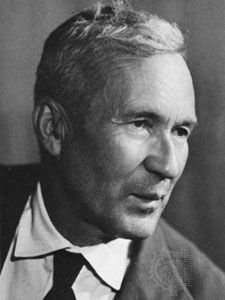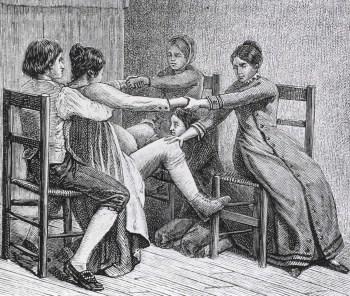Welcome to 19th Century, where we explore the fascinating world of the Victorian era! In this article, we delve into the intricate courting etiquette of the time. Discover the rules and rituals that governed the pursuit of love, as well as the dos and don’ts of courtship in this enchanting era. Join us on a journey back in time as we unlock the secrets of 19th century romance.
Unveiling the Intricate Courting Etiquette of the 19th Century
During the 19th century, courtship was an elaborate and highly regulated process. Etiquette played a crucial role in these social interactions, as it determined the rules and expectations that guided romantic relationships.
One prominent aspect of courting etiquette in the 19th century was the emphasis on modesty and propriety. Couples were expected to adhere to strict behavior codes, including avoiding physical contact and maintaining a respectful distance. Placing a high value on chaperones, individuals were rarely left alone together, ensuring that their interactions remained chaste and appropriate.
Another key element of 19th-century courtship was the importance of formal introductions. In many cases, couples were introduced through mutual acquaintances or family connections, and the act of being formally presented often signified the beginning of a courtship. This formality added an air of seriousness to the relationship, setting the stage for the couple to get to know each other through subsequent meetings.
Communication during courtship was predominantly done through written correspondence, such as letters and notes. The exchange of letters allowed couples to express their feelings and intentions in a more thoughtful and controlled manner. These correspondences were expected to be well-written and eloquent as they often served as a testament to a person’s character and intelligence.
Furthermore, gift-giving played a significant role in courtship during this time period. It was common for individuals to present small tokens of affection to their romantic interests as a way of expressing their feelings. These gifts could range from flowers and personal trinkets to handwritten poetry or love letters, symbolizing the depth of one’s emotions.
As courtship progressed and a couple became more serious, they would enter the stage of formal courtship. This involved attending social events together, such as balls and parties, where they would be seen as a couple in public. These events provided an opportunity for the couple to demonstrate their compatibility and secure their standing within society.
The courting etiquette of the 19th century was a tightly regulated system that emphasized modesty, propriety, and formality. From maintaining respectable behavior in the presence of chaperones to the exchange of written correspondence and gifts, every aspect of courtship was carefully orchestrated to uphold societal norms and expectations.
How Good Men Think During the COURTING STAGE
Children’s Early 19th Century Morning Routine
What was the courting process like during the 1800s?
During the 19th century, the courting process was quite different from modern dating practices. In this era, courtship was a formal and structured process that focused on finding a suitable partner for marriage.
1. Introduction: The courting process in the 1800s was governed by strict social rules and norms, mainly centered around the concept of courtly love.
2. Initial contact: To initiate courtship, a man would express his interest in a woman through a third party, such as a mutual acquaintance or family member. If the woman showed interest, she would signal her consent to proceed.
3. Chaperoned meetings: Courting couples would typically meet in supervised settings, such as at social events, family gatherings, or during church activities. Being alone together without a chaperone was considered improper.
4. Correspondence: Letter writing played a crucial role in courtship during the 1800s. Couples would exchange letters, often filled with romantic sentiments and expressions of affection. These letters were kept private and treasured as a symbol of their relationship.
5. Formal visits: After establishing a connection through correspondence, a man would visit the woman’s home with the permission of her family. These visits were formal and usually involved tea or other social activities. During these visits, the couple would get to know each other better and engage in conversation.
6. Courtship rituals: Various rituals and customs were part of the courting process. For example, a man might bring small gifts or flowers for the woman, and they might participate in activities such as dancing, walking, or attending cultural events together.
7. Approval from family: In many cases, the approval and consent of both families were necessary for the courtship to progress. Parents held significant influence over the relationship and could ultimately veto the match if they deemed it unsuitable.
8. Engagement: Once a couple had gone through the courting process and had the approval of both families, they would become formally engaged. This meant that they were now considered betrothed and could publicly declare their intention to marry.
9. Marriage: The ultimate goal of courting in the 19th century was marriage. Courting was seen as a serious commitment with the purpose of finding a suitable spouse. If the courtship was successful, the couple would proceed with wedding preparations and eventually tie the knot.
Courtship during the 1800s was a formal and structured process centered around finding a suitable partner for marriage. It involved initial contact through a third party, chaperoned meetings, correspondence, formal visits, and the approval of both families. Courting was seen as a serious commitment leading to engagement and ultimately marriage.
What were two rules for courting during the Victorian era?
During the Victorian era, there were strict rules and protocols when it came to courting. Two important rules were:
1. Chaperones: One of the most significant rules was the presence of a chaperone. It was customary for a young lady and gentleman to never be alone together without a third person present. This third person, usually an older relative or family friend, acted as a guardian and ensured that the interactions remained appropriate and respectable.
2. Proper Communication: Courting couples were expected to communicate in a polite and formal manner. Expressing affection or desire too openly was considered improper. Instead, they would exchange letters or engage in conversations filled with flowery language and compliments. The use of formal titles and full names was also preferred to maintain social decorum.
These rules were enforced to uphold morality and protect the reputation of individuals involved in courtship. They aimed to ensure that relationships developed with respect, modesty, and within the boundaries of societal expectations.
What were the courtship rules during the 19th century?
During the 19th century, courtship was governed by strict rules and societal norms. The process of courtship typically began with a formal introduction facilitated by family members or mutual acquaintances. Men were expected to initiate the courtship and express their romantic interest in a woman.
Physical contact between the couple was heavily regulated during courtship. Holding hands or kissing in public was frowned upon, and couples were generally chaperoned by a family member or trusted adult when spending time together.
Correspondence played a significant role in courtship. Men would often write letters to express their affection, while women were expected to reply with grace and discretion. The art of letter writing was highly valued, with individuals carefully choosing their words to convey their emotions.
Engagements were typically brief, ranging from several months to a year. Once a couple decided to marry, they would publicly announce their engagement. It was considered improper for a couple to spend time alone together before getting married.
Marriage proposals were a formal affair, often involving the man asking the woman’s father for permission to marry her. If granted, the proposal would take place in a private setting, such as the woman’s home or a special location that held meaning for the couple.
Overall, courtship in the 19th century was characterized by respect, restraint, and adherence to societal expectations. The rules aimed to ensure that romantic relationships were conducted with proper decorum and that marriages were based on a solid foundation of compatibility and social status.
Were people marrying for love during the 19th century?
During the 19th century, marriage was often seen as a practical arrangement rather than a union based on love. The primary considerations for marriage were social status, financial stability, and the formation of alliances between families. Love and romantic compatibility were not necessarily considered essential factors in choosing a spouse.
However, it is important to note that societal attitudes towards love and marriage began to shift during the 19th century. Romantic love and the idea of marrying for love became more prevalent, particularly among the middle class. This shift can be attributed to various factors such as the rise of the Romantic movement, increased emphasis on individualism, changes in social structures, and the spread of literature and art that celebrated the idea of passionate love.
Despite this shift, arranged marriages and marriages based on practical considerations still remained common, especially among the upper classes. In many cases, individuals had limited say in choosing their partners, and decisions were often made by parents or other family members.
Overall, while love and marriage were not always synonymous during the 19th century, there was a noticeable shift towards the importance of romantic love as the century progressed.
Frequently Asked Questions
What were the common courting rituals and practices in the 19th century?
In the 19th century, courting rituals and practices were heavily influenced by societal norms and expectations. Formal courtship was the conventional way for young people to pursue a romantic relationship.
Supervised social gatherings provided opportunities for young men and women to meet and interact under the watchful eyes of their families or chaperones. Dances, parties, and social events were common settings for these encounters.
Etiquette and proper behavior played a significant role in courting during this time period. Men were expected to be polite, respectful, and well-mannered, while women were encouraged to be modest, refined, and demure. Strict gender roles were adhered to, with men taking the lead in initiating and pursuing relationships.
Correspondence played a crucial role in courtship as well. Sending love letters was a common practice, allowing couples to express their feelings and maintain a connection. Correspondence was often exchanged through postal services or delivered by hand.
Gift-giving also played a part in courting rituals. Men would often present small tokens of affection to the women they were interested in, such as flowers, gloves, or books. These gifts symbolized their intentions and demonstrated their commitment.
Engagements were not taken lightly and were considered a formal commitment. Once a couple decided to get engaged, their families often played a significant role in negotiating and arranging the marriage contract.
It is important to note that these courting rituals and practices were predominantly observed among the upper and middle classes. Working-class and rural communities often had different customs and traditions influenced by their socio-economic circumstances.
Overall, 19th-century courting rituals were rooted in tradition, societal expectations, and the desire to find a suitable partner for marriage. These practices laid the foundation for romantic relationships and emphasized the importance of etiquette, respect, and commitment.
How did societal norms and expectations shape courtship and dating in the 19th century?
Societal norms and expectations strongly influenced courtship and dating practices in the 19th century. During this time period, marriage was seen as a central institution for maintaining social order and economic stability. As a result, courtship was viewed as a serious and purposeful process, governed by strict rules and expectations.
One of the most significant influences on courtship was the concept of “female virtue.” Women were expected to be modest, pure, and chaste, preserving themselves for marriage. This notion heavily shaped the way courtship was conducted. Women were discouraged from taking an active role in pursuing romantic relationships and were instead taught to be passive and demure.
Additionally, social class played a significant role in courtship and dating practices during the 19th century. People were generally expected to marry within their own social class, as crossing class boundaries was often frowned upon. Courtship within the upper classes tended to be more formal and involved elaborate rituals and displays of wealth and status. In contrast, courtship among the working class was simpler and more practical, often centered around shared responsibilities and economic compatibility.
Public displays of affection were also highly regulated by societal norms. Physical contact between unmarried couples was often limited and closely monitored. For example, it was considered improper for an unmarried couple to be alone together, especially in private spaces. Instead, courtship activities took place in public places, such as parks or social gatherings, where they could be observed by others.
Furthermore, parental involvement and approval were crucial in 19th-century courtship and dating. Parents often played a central role in selecting suitable partners for their children, considering factors such as social standing, financial stability, and family background. Romantic love, while not entirely disregarded, was often seen as secondary to these practical considerations.
Societal norms and expectations greatly shaped courtship and dating in the 19th century. The emphasis on female virtue, class distinctions, limited physical contact, and parental involvement all contributed to a structured and regulated approach to finding a suitable partner.
What were the rules and guidelines for expressing romantic interest and pursuing relationships in the 19th century?
During the 19th century, there were strict rules and guidelines when it came to expressing romantic interest and pursuing relationships. Courtship was a formal and highly ritualized process that followed specific social protocols.
Men were expected to take the lead in romantic pursuits and would often initiate contact with a woman through a third party, such as a mutual acquaintance or family member. Directly approaching a woman without an introduction was considered impolite and improper.
Once introduced, men were expected to make their intentions clear and pursue the woman with propriety. This typically involved writing letters and engaging in polite conversation during social gatherings or approved chaperoned outings.
Physical contact between unmarried individuals was highly restricted, with physical touch being considered inappropriate before marriage. Even holding hands or a simple embrace was often frowned upon.
Chaperones played a crucial role in monitoring and safeguarding the interactions between couples. A woman was almost always accompanied by a female family member or a trusted companion when spending time with a potential suitor.
Marriage proposals were expected to be formal and conducted with the permission of the woman’s parents or guardian. The man was generally required to have sufficient financial stability and social standing before being considered suitable for marriage.
Overall, the 19th century placed a heavy emphasis on social etiquette and maintaining a respectable reputation. Respectability and adherence to societal norms were vital in pursuing romantic relationships during this era.
The courting etiquette of the 19th century played a significant role in shaping social norms and expectations . This period was marked by a strict code of conduct that governed romantic relationships, emphasizing the importance of proper behavior, modesty, and courtly gestures. The rules surrounding courtship were heavily influenced by societal values , which favored the preservation of family honor and the maintenance of class distinctions.
Courtship during this era was a highly structured process , often beginning with formal introductions and followed by a series of carefully orchestrated encounters. It was considered essential for young men to display good manners, intelligence, and financial stability, while women were expected to embody grace, modesty, and domestic skills.
The practice of calling on a potential romantic partner’s home, accompanied by a chaperone, was commonplace. This allowed families to assess the suitor’s character and ensured that interactions remained within appropriate boundaries. Communication during courtship was primarily carried out through handwritten letters , a slow and deliberate method that allowed couples to express their feelings and intentions in a more thoughtful manner.
One noteworthy aspect of 19th century courting etiquette was the concept of “courtly love,” an idealized form of romance that celebrated devotion, purity, and selflessness. This notion was often reflected in poetry, literature, and music of the time, further shaping societal expectations around courtship.
While some may view the rigid rules and expectations of 19th century courting etiquette as antiquated and restrictive, these practices served to maintain social order and preserve traditional values. They provided a framework for individuals to navigate the complexities of romantic relationships within the moral and cultural context of the era.
In modern times, the courting rituals of the 19th century may seem foreign and outdated, but they offer a fascinating glimpse into the social dynamics and expectations of the time. Understanding and appreciating the courting etiquette of the 19th century allows us to better grasp the historical and cultural context in which our ancestors lived and loved .






